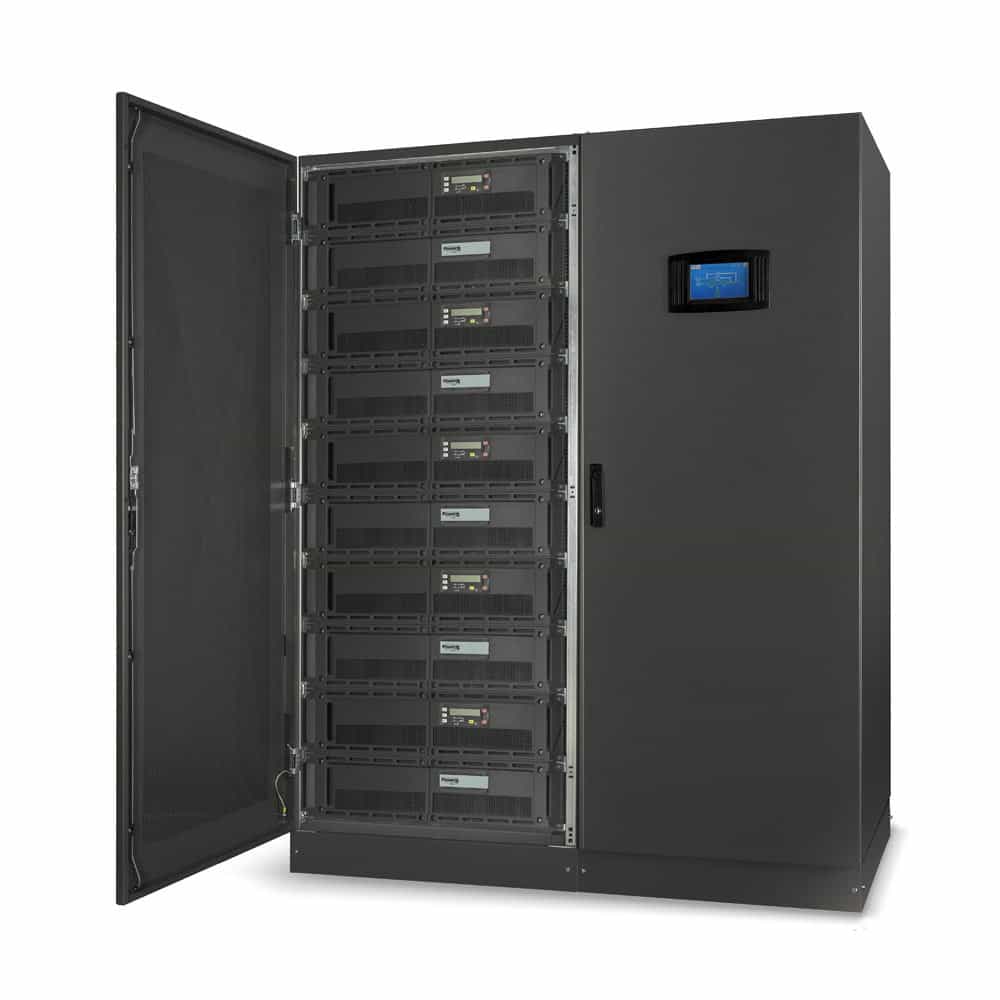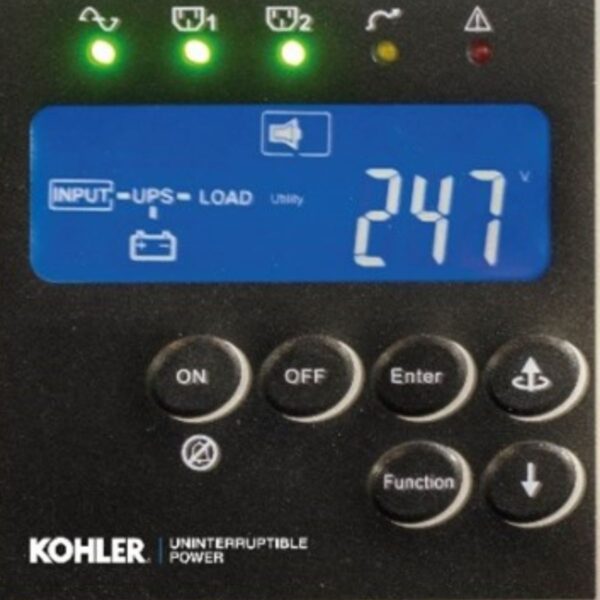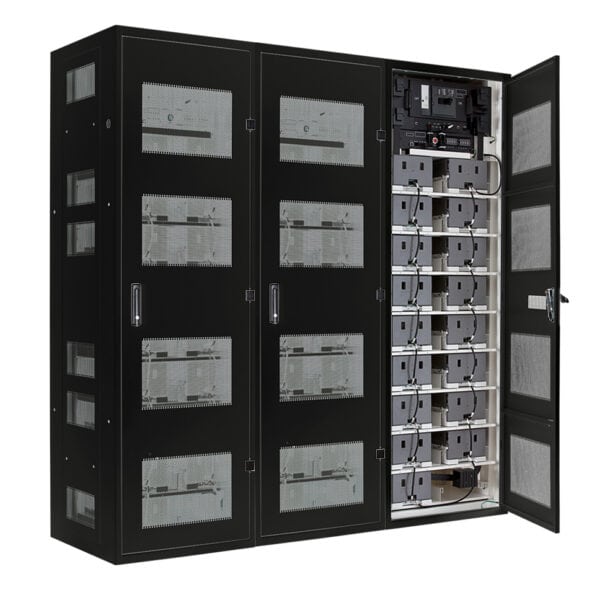Data centre availability is critical to the success or even survival of most organisations today. Its importance is reflected in The Uptime Institute’s Tier Classification System that defines different tiers of availability for data centres. A review of the tier requirements quickly reveals that they consider UPSs and their performance as critical factors in overall availability.
In this article, Tan Yu Ming, General Manager, general manager at KOHLER Uninterruptible Power, looks at the Tier Classification system and its expectations of UPS performance. He then discusses how modern, modular UPS technology can help data centre owners meet these expectations and above all achieve the level of availability they need.
Data centre operators buy in UPS systems to provide clean, uninterrupted electrical power to their centre’s IT and communications equipment – but the ultimate purpose of this power integrity is to maximise the data centre’s uptime as far as possible.
As increasing numbers of organisations’ success or even survival today depends on the continuous availability of their IT and communications resource, data centre uptime has become a critical issue for all users. Since its creation in the mid Nineties, the Uptime Institute’s Tier Classification System has existed to help operators understand the issues related to uptime, and the steps they must take to achieve a level of uptime performance appropriate to their particular business needs. It has become the global standard for third-party validation of data centre critical infrastructure, and was introduced to consistently evaluate various data centre facilities in terms of potential site infrastructure performance, or uptime.
The system comprises four tiers, from the most basic Tier l to the fully fault tolerant infrastructure of Tier lV. While higher tiers offer more expected uptime than those below them, they come with increased operational complexity and infrastructure costs. No tier is universally best; each organisation depending on a data centre must decide which balance of investment against risk is most appropriate for their particular circumstances.
This article is intended to inform on how suitable choices of UPS systems can contribute to improved data centre uptime. Accordingly we briefly review the four tiers of the classification system below, with particular reference to their expectations of UPS and power system performance. We then look at how currently available UPS technology can be deployed to meet these expectations.
Tier requirements
Tier l: Basic Capacity – A Tier l data centre provides dedicated site infrastructure to support information technology beyond an office setting. The infrastructure includes a dedicated space for IT systems, and a UPS to filter power spikes, sags and momentary outages. It also has ‘Always on’ cooling equipment and an engine generator to protect IT functions from extended power outages.
Tier ll: Redundant Capacity Components – Tier II facilities include redundant critical power and cooling components to provide select maintenance opportunities and an increased margin of safety against IT process disruptions that would result from site infrastructure equipment failures. The redundant components include power and cooling equipment such as UPS modules, chillers or pumps, and engine generators.
Tier lll: Concurrently Maintainable – A Tier III data centre requires no shutdowns for equipment replacement and maintenance. A redundant delivery path for power and cooling is added to the redundant critical components of Tier II so that each and every component needed to support the IT processing environment can be shut down and maintained without impact on the IT operation.
Tier lV: Fault Tolerance – A Tier lV site infrastructure is as Tier lll, adding the concept of Fault Tolerance to the site infrastructure topology. Fault Tolerance means that when individual equipment failures or distribution path interruptions occur, the effects of the events are stopped short of the IT operations.
Note that the Tier Classification System does not prescribe specific technology or design criteria – it is up to the data centre owner to meet these with an approach that fits their own infrastructure goals. Notwithstanding this, some key guidelines for power system specifications emerge from the above; they include the UPS’s need to protect from power spikes and sags as well as momentary power failures, plus the requirement for an engine generator to cater for longer-duration outages. Redundancy, modularity and the ability to perform maintenance and repairs without shutdown also become essential for higher tiers.
Choosing UPS topology to comply with tier requirements
There are two major types of static UPS architecture available; off-line, and on-line. These share common features as well as having key design differences. Both include a rectifier/charger, a battery, an inverter and a static switch. The rectifier/charger converts mains AC current into DC for charging the battery. This also shows the fundamental difference, though; during normal mains operation, the off-line system’s static switch is connected to Bypass, so that raw mains power is fed directly to the load. By contrast, the on-line system’s static switch, during normal mains operation, is connected to the inverter output, so mains power reaches the load via all the UPS components.
There are also line-interactive systems, which attempt to perform better than conventional off-line designs by offering voltage regulation features in the bypass line.
On-line systems offer the greatest degree of compliance with tier requirements for power protection, because the load is supplied with processed power at all times. The regenerated power it receives from the inverter is isolated from input supply aberrations, with the rectifier and inverter providing a barrier to mains-borne noise and transient voltage excursions in addition to providing a well-regulated output voltage.
Other tier requirements for UPS systems – redundancy, modularity and live system maintenance – can be met by using modern, modular UPS topologies. Advanced products such as KOHLER Uninterruptible Power’s KOHLER PW 9500DPA comprise one or more racking frames. A single frame can be populated with one to up to five UPS 100kW rackmounting modules, each of which is a complete, standalone UPS in its own right. This incremental addition of UPS capacity to track growth in data centre demand is known as vertical scaling. Additionally, up to six frames can be paralleled together for horizontal scalability, delivering up to 3MW total power.
However, this modularity and incremental scalability also means that redundancy can be built in easily and efficiently. A single rack, for example, could be populated with five modules to drive a 400kW load in N+1 redundancy mode; if one module fails, the others have sufficient capacity to fully support the load without interruption or intervention. This arrangement uses UPS capacity very efficiently, as only 100kW redundant overhead is required. By comparison, a standalone system would typically require two units of 400kW each to support a 400kW load with N+1 redundancy.
Note also that Tier lll and above require a redundant power delivery path, as shown by the 2(N+1) systems in Fig.1. This drawing illustrates how the addition of the redundant power path to the redundant UPS components in each path doubles the opportunity for modular design to reduce redundant UPS capacity overhead.
The shown modular UPS systems can be repaired and maintained on-line, without interruption of power to the load, as the modules are hot-swappable. A faulty unit can be simply removed, and a replacement plugged in, without need for shutdown or bypass. The load is not denied power, nor is it ever exposed to raw mains. Availability improves as mean time to repair (MTTR) is reduced and levels of 99.9999% or ‘six nines’ are possible.
Summary
In this article we have seen how the Uptime Institute’s Tier Classification System provides a useful tool for data centre designers and operators endeavouring to establish the most appropriate level of availability for their installation. Our review has also highlighted a set of UPS characteristics that are defined by the various Tier levels’ demands. This has allowed us to discuss how modern, modular UPS topology can be deployed to comply with these characteristics.





